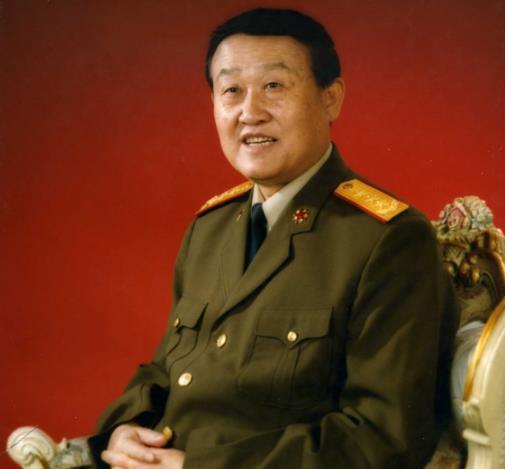General Li Laizhu: Former commander of the Beijing Military Region, he personally visited the Laoshan front to inspect the 27th Group Army
The 27th Group Army is a unit with a glorious history, formerly known as the 27th Army of the former Beijing Military Region, which can be traced back to the local units of the Jiaodong Military Region of the Eighth Route Army during the War of Resistance Against Japan. The 27th Army, whether in the War of Liberation or the War to Resist US Aggression and Aid Korea, has made outstanding achievements in battle, especially in the War to Resist US Aggression and Aid Korea, which has become the only example of a complete regimental structure of the US Army in the War to Resist US Aggression and Aid Korea. On the front line of Lao Shan in the counterattack against Vietnam, the 27th Army also had a good record. General Li Laizhu, former commander of the Beijing Military Region, personally visited the Laoshan front to inspect the 27th Group Army.

In October 1932, Li Laizhu was born in Xinxian County, Shandong Province. At this time, Shandong was under the rule of the warlord Han Fuyu, but the Japanese had been coveting Shandong since the September 18 Incident and including it in the concocted "Autonomy of the Five Provinces of North China". In 1937, the "July 7 Incident" broke out, and Japan began to invade China in an all-round way. On September 24, Jinan, the capital of Shandong Province, fell. Therefore, Li Laizhu's childhood was also spent under the iron hooves of the Japanese Kou. In those passionate years, in order to drive out the Japanese invaders, Li Laizhu joined the guerrilla group of Xinxian District 2 at the age of 12 and became a guerrilla.
In September 1947, Li Laizhu officially joined the army and became an ordinary soldier in the 11th Company of the 4th Battalion of the 3rd Regiment of the Luyu South of the Jinji Dynasty. Major military operations such as the Liaobo Campaign, the Pinghan Campaign, the Zhengzhou Campaign, the Huaihai Campaign, the Battle of Crossing the River, the March into the Great Southwest, and the Chengdu Campaign all left Li Laizhu's figure, and he participated in more than 200 campaign battles. During this period, Li Laizhu was seriously injured six times. After the founding of New China, Li Laizhu entered the Sixth Political Cadre School for further study. In the following years, Li Laizhu trained in many posts and became the Shijiazhuang Army School in 1983.
In June 1985, Li Laizhu was appointed deputy commander of the Beijing Military Region and was promoted to the rank of deputy military region. In 1987, the 27th Group Army was ordered to go to southern Xinjiang to carry out the task of the two-mountain round battle and waited in a strict position on the Laoshan front, which was the first time that the 27th Group Army had undergone a real combat test since the reorganization of the group army, which was of great significance to the Beijing Military Region. Therefore, the weapons and equipment of the 27th Army are very luxurious. It is worth mentioning that Lieutenant General Qin Tian, the later deputy commander of the Armed Police Force, was also in the 27th Group Army. In order to understand the combat situation of the front-line troops at the first time, Li Laizhu personally visited the Lao Shan front to inspect the 27th Group Army, braved the threat of Vietnamese artillery fire, inspected 64 front-line positions and 274 posts, and met with more than 19,000 officers and men.
In September 1988, after the abolition of the rank system in 1965, our army restored the rank system after a gap of 24 years. This time, Li Laizhu was awarded the rank of lieutenant general. In December 1993, Li Laizhu succeeded Lieutenant General Wang Chengbin as commander of the Beijing Military Region. In May 1994, Li Laizhu was promoted to the rank of general. From the "baby soldier" in the smoke of the War of Resistance Against Japan to a general at the level of the Chia Tai Military Region, Li Laizhu spent half a century. In November 1997, General Li Laizhu reached the maximum length of service at the level of The Chia Tai Military Region and stepped down as commander of the Beijing Military Region.
Today, Admiral Li Laizhu is 88 years old and has published works such as "Blood Washing The Dust", "The Love Cast Division", and "The Bridge and The Boat with the Soldiers". Not only that, But General Li Laizhu was also a "poet general". In "Water Tune Song Head. In the "Seventy Lyrics", General Li Laizhu wrote: "Frank liver and gallbladder, holding high the iron bone." This is the portrayal of his military service throughout his life. The most admirable thing is that after General Li Laizhu left his retirement, he still adhered to the "three no's principle", that is, not smoking, not drinking, and not spending a penny indiscriminately, which can be called a model for the world.